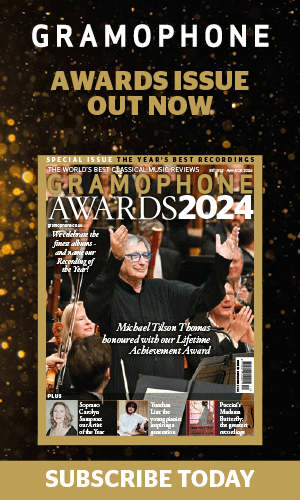Playlists – April 2016
Gramophone
Thursday, March 31, 2016
Scarlatti sonatas
Harriet Smith samples the vibrant originality of Scarlatti’s keyboard works
As Yevgeny Sudbin’s new disc shows, Domenico Scarlatti’s extraordinarily adventurous, idiosyncratic and hugely varied legacy of keyboard sonatas offers the perfect fodder for the daring pianist. It’s no coincidence that many of the artists on this playlist are Russian, for, as Sudbin recalled, ‘During my studies in Russia he was almost considered a “Russian” composer, since his sonatas were standard repertoire for any student’.
One of the fascinating aspects about Scarlatti is that you can take a single sonata and there will be as many views as there are interpreters. Take the Michelangeli and Gould readings of Kk9, for instance, the one flowing and understated, the other prioritising clarity, combined with Gould’s inimitable vocalisations; or Horowitz (whose Scarlatti needs no introduction) and Pletnev – poles apart in the tenderly flowing Kk25. Then there’s Gilels throwing caution to the wind in the constantly changing textures of Kk125, while the splendidly idiosyncratic Croatian Ivo Pogorelich brings to life with a clipped brilliance the hunt conjured in Kk159. There’s no right or wrong, it’s merely a matter of taste. Pletnev is more daring still, taking thrilling liberties with speeds and dynamics in Kk29. And we end with two great French pianists, who combine heart and head to extraordinary effect.
Spring blooms
Tim Ashley offers a bouquet of works inspired by the delicacy of flowers
‘The flowers that bloom in the spring, tra la, bring promise of merry sunshine,’ Gilbert & Sullivan tell us in The Mikado. Most composers, however, are more ambiguous. Flowers embody the transience of nature, as well as its beauty, and frequently suggest images of life, love, desire and loss.
The flowers in Tchaikovsky’s Nutcracker waltz with unfettered vitality. Puccini contemplates the beauty of chrysanthemums in his only major work for string quartet, and Mahler, in the Minuet from his Third Symphony, views flowers as the embodiment of natural innocence, unsullied by humanity.
In Mozart’s ‘Das Veilchen’ and Berlioz’s ‘Le spectre de la rose’, however, the imagery darkens as a plucked flower in each song comes to symbolise a lover’s willing self-sacrifice for the sake of an ideal beloved. Richard Strauss, in contrast, invests his serene ‘Wasserrose’ (waterlily) with almost mystic significance.
In Wagner’s Parsifal, the Flower Maidens in Klingsor’s garden attempt to seduce the opera’s virginally ignorant hero, while Britten’s ‘The Sick Rose’, from his Serenade for Tenor, Horn and Strings, shudders uneasily at the thought of corruption and decay. Chausson, meanwhile, mourns the passing of ‘the time for lilacs and roses’ with quiet finality as an expression of regret for lost love.









